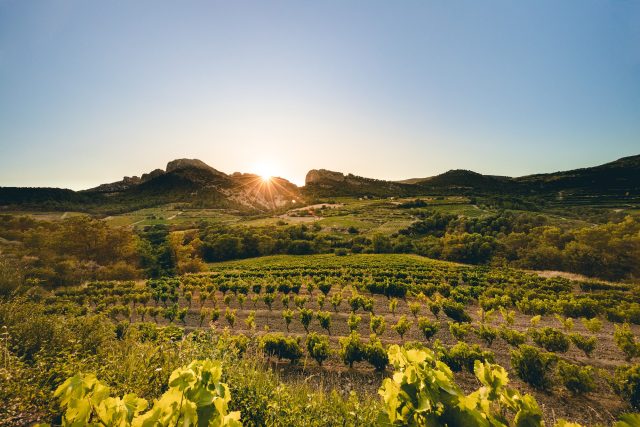This website uses cookies so that we can provide you with the best user experience possible. Cookie information is stored in your browser and performs functions such as recognising you when you return to our website and helping our team to understand which sections of the website you find most interesting and useful.
Rhône producers reflect on the ‘perfect position’ for sustainability
Two Rhône Valley vignerons give their exclusive perspectives on sustainable production in the region and its implications for winemakers.

Inter Rhône’s latest tasting in London allowed attendees to see the sheer diversity of the Côtes du Rhône and associated crus first hand. With more than 85 wines to taste, covering reds, whites, rosés and sweet wines from a number of appellations, it was a reminder to the UK wine trade of the diversity on offer from the Southern French region.
Two winemakers present also demonstrated diversity. Representing well established Rhône winemaking and a new incoming generation, they reflected the Rhône’s current efforts towards sustainability and the forces driving it forwards.
Maurice Goetschy, owner of Château Boucarut alongside his wife Saskia, is a new voice in the Rhône. Having moved from Luxembourg in 2017, they began crafting wines in 2019.
For him, the question of organic production was already decided by the time they bought the property. Having seen that organic wine was “not any more seen as eccentric”, he knew that the estate had organic potential.
Moreover, as viticulture is fully embedded into the local society, it made sense to protect their home and surrounds. “We were living in the middle of our vineyards, so I thought it makes sense to preserve a proper environment for us and our family,” he explains.
Claude Chabran, on the other hand offers a more historical perspective on the Rhône Valley’s sustainability progress. As the president of the Rhonéa group, he is at the centre of the industry, after 25 years working in the region. The road to full sustainability has not been smooth.
“I think the real change was 2010 to 2015, maybe,” he says. “But the market was not present at that time, so a lot of producers went back to traditional viticulture around 2016. Now, there is a new trend towards organics during the last four or five years.”
It is a trend that now accounts for much of the Rhône’s production. In the 2022 vintage 28% of the Rhône Valley vineyard area was HVE certified, a mark of high environmental value. A further 20% was farmed organically.
According to Chabran, it represents a generational change. “We have got a new generation which is more aware of the problems of chemicals, of the problems of intensive viticulture and they want to go back to traditions.”
He acknowledges, however, that the region’s vignerons are in a privileged position. “It is, I would say, the perfect position for organic viticulture,” he admits, highlighting the free draining soils and mistral winds.
Goetschy agrees that the change is generational, as well as a result of technological advances. He also posits that it is a new frontier. “Sometimes it is also a challenge for the winemaker,” he says. “He manages the land and wants to go further.”
If that is sometimes a challenge – Goetschy acknowledges that finding the right people for the more intensive process – it is being justified in the Rhône Valley’s proposition to both visitors and drinkers.
As both oenotourism and sustainable viticulture grow in popularity, the well protected landscape attracts visitors and drinkers. Though now addressed with increased focus, such as through the Vignobles Découvertes programme, the landscape has been cared for long before these became trends.
Taking the Beaumes de Venise appellation as an example, it has always prioritised the natural landscape. Chabran, having worked in the appellation for decades, recalls excluding woods from the appellation’s limits at its inception 18 years ago. The areas were deliberately left out to disincentivise their development, preserving the natural landscape.
The diversity of appellations and large number of winegrowers is continuing to ensure the landscape is protected. As Goetschy summarises, “the first person to protect the piece of land is the owner. If we have 7,000 owners, we have 7,000 people who would do all they can to protect and preserve the land.”
As the Côtes du Rhône and associated crus adapt to changing consumer demands, communicating the landscape will be key. The current projects, for example expanding white wine production to 300,000 hectolitres by 2031, will be bolstered by oenotourism and better understanding of the Rhône Valley’s green credentials.
For Goetschy, the challenges are significant, but so are the opportunities. After all, as he highlights, the Rhône Valley is the closest Mediterranean wine region to the UK, making it a logical choice for affordable, popular styles. The balance between value, sustainability and style is complex to maintain, but can offer rewards.
Still, his choice to make wines in the also has a simpler reasoning. “Through being involved in farming, I have a higher chance to preserve biodiversity. Seeing biodiversity makes me happy, and when I’m happy I work better.”

